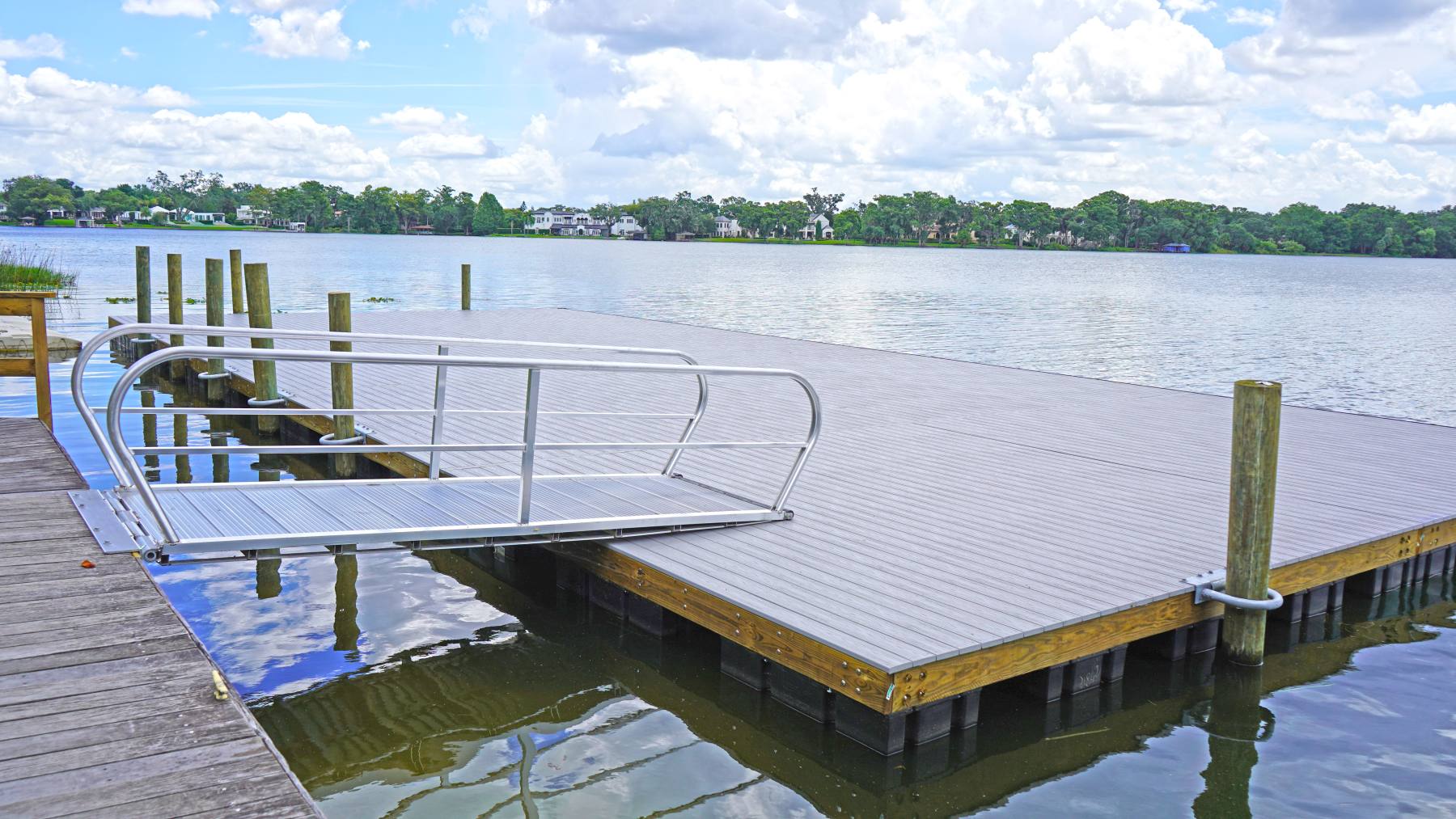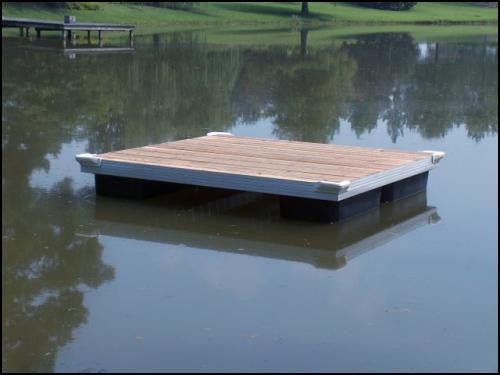Browsing the Options: Picking the Right Dock Company for Your Floating Dock Project
Floating Docks: The Ideal Option for Versatile Water Access
Floating docks present an engaging solution for a variety of water accessibility requires, providing flexibility that transcends traditional mooring alternatives. The modular nature of floating docks helps with customization, providing to details demands.
Advantages of Floating Docks
Floating docks deal many benefits that improve water access for numerous applications. Their capability to drop and increase with changing water degrees makes them particularly useful in atmospheres with varying trends or seasonal variants. This adaptability makes certain that vessels can quickly moor without worry for the water's depth, giving a trusted platform for recreational, industrial, and commercial uses.
Additionally, floating docks are typically created from durable products that resist deterioration, making them suitable for long-term use in aquatic environments. Their setup is typically less invasive than standard fixed docks, reducing the environmental effect and promoting quicker release (floating dock services). This versatility enables less complicated relocation or reconfiguration according to user needs or environmental modifications
Security is one more essential benefit; floating docks can provide stable accessibility for people boarding or getting off from watercrafts and minimize the danger of mishaps connected with unsteady surfaces. Additionally, they can be developed to accommodate a variety of devices, such as fenders and cleats, boosting capability. Overall, floating docks represent a reliable remedy for enhancing water access across varied markets while promoting safety and ecological sustainability.

Types of Floating Docks
Various kinds of floating docks accommodate different requirements and settings, each developed with details features to enhance capability. The most typical kinds include modular docks, which are composed of interlacing sections that permit very easy customization and growth. These docks are perfect for leisure usage, as they can be tailored to fit various watercraft dimensions and water problems.
Another popular choice is the fixed floating dock, which remains anchored in location however drifts with transforming water levels. floating dock builder. This type is especially fit for locations with marginal tidal fluctuations, offering steady accessibility for angling or swimming. In addition, there are drive-on docks, which include a sloped style that allows boats to conveniently drive on and off, making them ideal for personal boat and smaller vessels
For industrial applications, durable floating docks are offered, built from strengthened materials to stand up to substantial lots and harsh aquatic settings. Eco-friendly floating docks make use of sustainable products and layouts to lessen environmental impact, frequently integrating features like plant life to sustain regional wildlife. Understanding the numerous types of floating docks guarantees that users can pick one of the most suitable solution for their specific demands.
Installment Process Overview
An effective installation of floating docks needs careful preparation and interest to information to make sure optimal efficiency and safety. The initial step involves examining the site problems, including water deepness, current, and potential challenges. This assessment educates the selection of the ideal dock materials and layout tailored to the certain atmosphere.
Following, acquiring essential permits is essential, as numerous territories have policies regarding building and construction on water bodies. Once approvals are secured, the setup can continue. Begin by preparing the structure, which may include anchoring systems or pilings customized to the dock kind and local problems.
Following the foundation configuration, assemble the dock sections according to maker requirements. Ensure that all elements are firmly fastened and aligned to endure ecological stress and anxieties. Position the dock in the designated area, ensuring it is level and steady.

Upkeep Tips and Finest Practices
After the setup procedure is complete, continuous maintenance plays an important role in making sure the long life and capability of floating you could check here docks. Normal examinations must be carried out to identify any kind of indications of damages, wear and tear, or wear - floating dock builder. Look for any kind of loose installations, fractures, or splitting up in the dock sections, as these can compromise architectural stability
Cleaning the dock is crucial to eliminate particles, algae, and other accumulation that can affect its look and safety. Make use of a gentle stress wash occasionally to maintain sanitation without read this article causing damages to the surface area. In addition, applying a safety sealant every few years can aid enhance longevity and withstand ecological wear.
Focus on the mooring lines and supports, ensuring they are cost-free and secure from rust. Change any type of abject elements quickly to avoid dangers. Seasonal adjustments may additionally be necessary; during severe weather, reinforcing the dock or repositioning can protect against damages.
Applications for Floating Docks
Floating docks serve a wide range of applications, accommodating both industrial and leisure demands. In entertainment settings, they offer seamless access to waterways for tasks such as boating, angling, and swimming. Their flexible nature permits installment in differing water degrees, guaranteeing secure and secure accessibility no matter tidal fluctuations.
Commercially, floating docks are essential for marinas and waterside services. They assist in the docking of vessels, making it possible for reliable filling and dumping of goods. Their modular layout enables very easy development or reconfiguration to suit changing company demands, making them optimal for boat rentals, tour operations, or angling charters.
In addition, floating docks are used in environmental applications such as aquatic research and environment repair. They can act as platforms for scientific studies, keeping track of water quality, or conducting wild animals studies without disturbing delicate ecological communities.
In commercial contexts, floating docks are used in building projects, providing accessibility to hard-to-reach areas for equipment and employees. Their flexibility, sturdiness, Go Here and very little impact on the setting make them an ideal choice for a variety of applications, enhancing both capability and ease of access in different water-based environments.
Verdict
In final thought, floating docks represent an ideal solution for varied water gain access to needs, owing to their flexibility, sturdiness, and modular layout. These structures promote risk-free mooring for numerous applications while reducing environmental impact during installment. The decreased upkeep requirements better enhance their functionality. As such, floating docks act as an important property for entertainment, commercial, and environmental jobs, guaranteeing reliable access to waterways and promoting sustainable methods in aquatic environments.
Floating docks present an engaging solution for a variety of water gain access to needs, supplying convenience that goes beyond conventional mooring alternatives.Floating docks deal various benefits that boost water gain access to for various applications. Generally, floating docks stand for an efficient option for improving water accessibility throughout varied fields while promoting safety and security and ecological sustainability.
One more preferred choice is the fixed floating dock, which remains secured in place however drifts with changing water levels.In verdict, floating docks stand for an ideal solution for diverse water gain access to requires, owing to their flexibility, toughness, and modular layout.